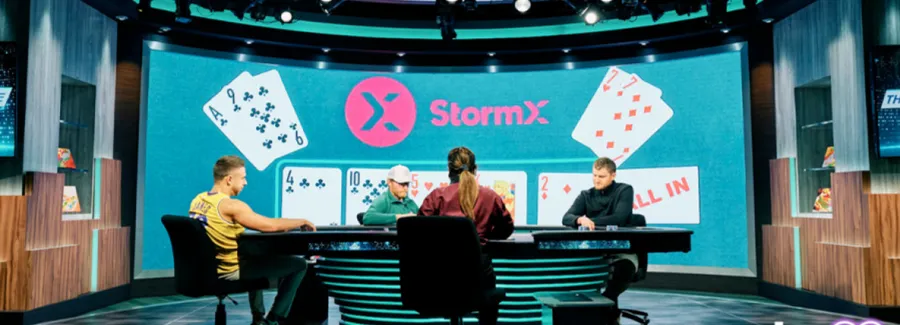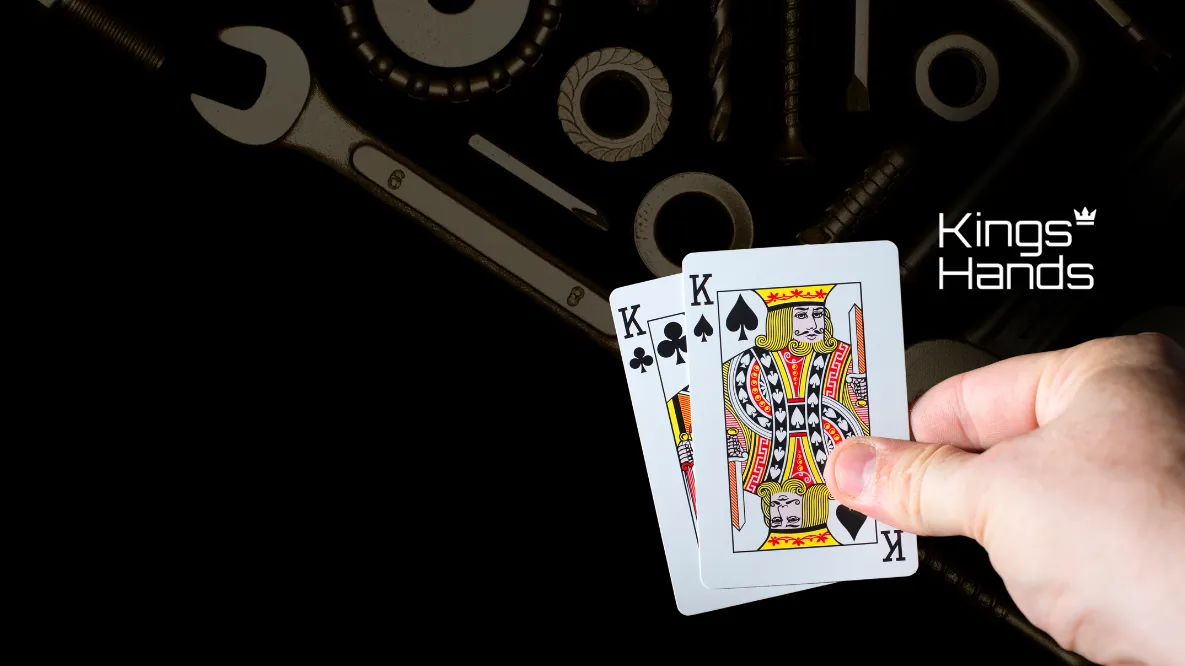If you’re a tournament player, whether MTT or SNG, you just cannot do without studying ICM. Since it reflects the way ranges are impacted by payout pressure, we simply must make these adjustments to thrive in the MTT endgame or risk bleeding chips in all the wrong spots.
ICM is a highly technical, and important part of tournament poker, particular endgame, as we’ll explore below – thankfully there are some very simple ways to think about and study it which will help to make it far more accessible. We’ll unpack these in the sections below.
Just What is ICM?
ICM stands for independent chip modelling, which sounds daunting but is really just a model for what your chips are worth at any one moment in a tournament. Unlike cash games, your chips don’t have a fixed financial value in a tournament. That value is always shifting depending on the total number of chips in play and how they are distributed between the players, as well as the payout structure of the event.
In a nutshell, you cannot simply sit out and collect your winnings as you can in a cash game. Stacks have leverage, the potential to translate into a cash, into a range of possible cashes in the payout structure. ICM is an attempt at a mathematical model which tells you what your stack is worth, and your opponent’s stack, in a given spot, and how we should adjust our ranges based on that.
In cash games we talk about chip equity value (cEV) which is the straightforward equation of $1 worth of cash game chips to $1 USD. In tournament poker we talk about $EV, which is an estimate of the dollar value of our chips in a tournament, in relation to all the other stacks and our position relative to the payouts at any one moment in the event.
Think about the fact that survival has a premium in a tournament, especially so as you approach the bubble or a big payjump on a final table. Sometimes all you have to do is fold another orbit and you hit a payjump. This translates into the notion that holding on to the chips you already have (especially to your last BBs!) has more value than gaining the same amount of chips in the next hand. This is because your last chips represent your very existence in the tournament, once you lose those you are busto.
Side Note: Stack Utility
There’s also a little extra feature which factors in here known as stack utility but this is not included in an ICM model. Stack utility is the notion that whilst going from, say, 10bbs to 20bbs in stack makes a big difference to what you can do in-game (you can 3bet non-all in, you can min open more often and fold to a raise, etc.) whereas going from 45bbs to 55bbs in stack makes almost no difference. This is another kind of undulating value to chips which is not even covered by ICM calculations, and is a little harder to pin down, but worth thinking about in certain close decision spots nonetheless.
Does ICM apply only near or after the bubble?
ICM effects can be much more pronounced as you approach the bubble or a big payjump, but that’s simply because the premium on survival is going up the closer you get to that cash. Doing nothing can make you money in this spot, so there’s a larger incentive not to lose your very last chips.
However, ICM will still be around and having some subtle effect at other stages in the tournament. Even in the early stages it might make certain spots which were 2% profitable in a cash game breakeven in a tournament, for example. Bear in mind there are also effects in tournaments which make us want to play wider, such as the presence of an ante enlarging the pot.
Basic Principles of ICM
Whilst the actual detailed impact of an ICM effect will depend on exact distribution of chips and payout structure, and can be hard to accurately intuit in-game, the general principles of the impact of the effect on different stacks is quite easy to outline, and will give you a good idea to get started with.
The main impact of ICM pressure is that there is an incentive not to bust, so especially when you are the effective stack in an all-in situation (the shorter stack of those in the hand, and therefore at risk of busting) one significant effect is that you must call off against all-ins with a tighter range than you would do normally. This would also be somewhat true for a stack which stood to lose almost all its chips in an all-in spot but have a few bbs remaining.
If you are one of the larger stacks, the impact of ICM on your play when battling small and middle stacks will be lesser, since you aren’t risking your entire stack when you get all-in against these players. The ICM impact will be at its greatest for you when you are contesting a big pot against another big stack.
If you are one of the smallest stacks, the impact of ICM on your play will also be a little more limited than for middle stacks. This is due to the fact that your stack utility is very limited, and that the blinds will wear down your stack to nothing if you don’t take edges available. ICM is especially minimal for the shortest stack in an event, especially if there are no other fairly short stacks around, since there’s really no purpose in waiting around for a payjump (unless the larger stacks are playing very fast and loose, in which case someone might bust out sooner than you).
The ICM pressure tends to be greatest of all for the middle stacks, who are under pressure from everyone for a significant portion of their stack, and tend to hit payjumps by outlasting the short stacks. This means they are more restricted in what they can do.
If Everyone Has to Fold More to Shoves, I Can Shove Wider Right?
Not necessarily. Because there is ICM pressure on the open shover as well, although less than on the caller of the shove (assuming they have equal stacks). This is because the caller will be all-in and going to showdown every time they call, but the shover will not be all-in as often, as they will get some folds. So they will bust out less often overall, relative to their range strength. Nonetheless ICM pressure still applies, so there are two forces acting on the open shover.
One factor is the tighter calling ranges behind, allowing the open shover to shove wider. The other is ICM pressure, causing him to tighten up again. In some scenarios these forces actually cancel out fairly closely, meaning the shover will want to be slightly tighter than in cEV spots, but not much. In other spots they can still go super wide, it will depend so much on the stacks, numbers of players to shove through, and where you are in the payjumps.
What Exploitative Plays Can I Make in ICM Spots?
The most important thing to note is that if your opponents are calling wider than they should in ICM pressure spots, this will really kill your profit with your more marginal shoving hands and make them big losers. So if you have reason to believe that your opponent is calling off even a bit too wide, you’ll have to tighten up your shoving range considerably. Let’s look at a quick example of this in action.

Here is a 6-handed spot from a final table, where the Button has 10bbs, SB has 10bbs and BB has 8bbs (the other stacks range from 20-40bbs). Note that the Button can shove almost 38% of hands including those as weak as J9o.
Just for comparison, let’s look at these ranges in a cEV scenario (no ICM at all and disregarding any rake):

Note that, as discussed above, although the blinds can call off significantly wider here, Button still shoves very slightly tighter.
Now, let’s return to the first set of ranges in ICM on the FT, but adjust the calling ranges so that they are a bit wider. We’ll give BB any pair, any ace and a couple of extra suited combos, and SB any suited ace and an extra offsuit Ax combo, just altering ranges by a few percent.

As you can see, this has had a very strong effect on Button’s shoving range, reducing it from around 38% to around 29%, as it must be reduced by around a third. The worst offsuit shove has gone from J9o to QJo. So if in doubt about how well your opponents understand ICM adjustments, you must tighten up!
Other exploits include sizing big instead of shoving versus players who are exceptionally tight, as this will achieve almost the same benefit as a shove without risking as many chips.
What’s the Best Way to Improve at ICM Spots?
Aside from grasping the fundamentals, the best way to study ICM is simply to grind out an absolute ton of spots in a preflop calculator such as Holdem Resources Calculator, used for the screenshots above. It’s not very intuitive how stack distributions will change ranges in these spots, so a lot of brute force solving is required to hammer the ranges into your memory. There’s no real replacement for this, so get solving today!
We hope you’ve enjoyed this article from PokerDeals, please hop in the PokerDeals Discord and let us know!
Image courtesy of PokerGO.com





















